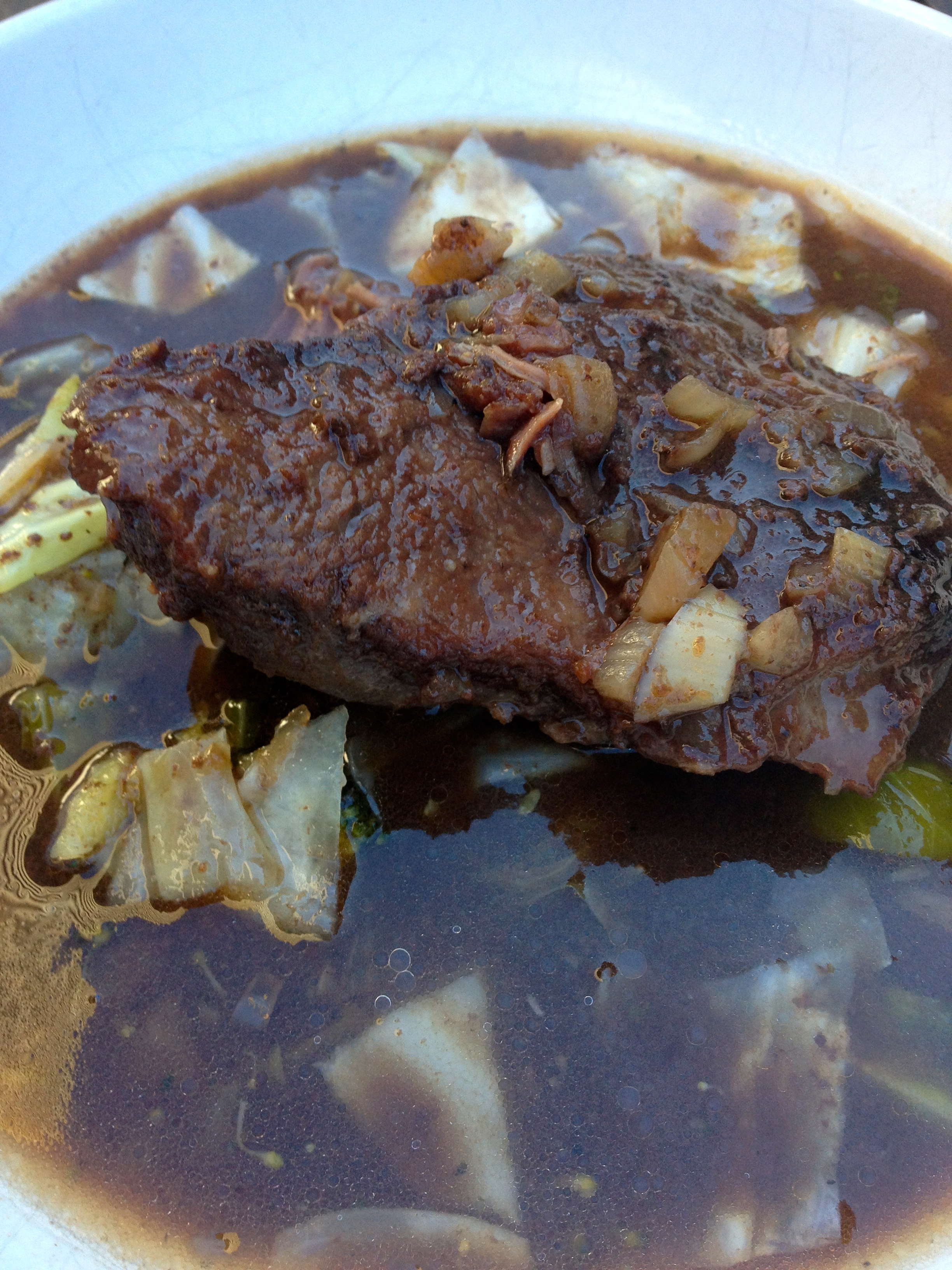Roast pork with crispy crackling served with nashi pear sauce
IMG_3911
Tonight's dinner: slow cooked roast pork with crispy crackling served with buttered steamed greens, nashi pear sauce, red cabbage sauerkraut and cup of chicken broth.
In a bid to further reduce time and effort in the kitchen, without compromising nutrient-density and flavour, I've simplified to the bare bones my slow cooked roast pork recipe as follows:
Ingredients:
1 pork belly
Raw apple cider vinegar (ACV)
Sea salt
Directions:
Place pork belly in oven proof baking dish (I used a large rectangular glass Pyrex dish) and add enough ACV to cover the pork belly but not the skin/crackling. Allow to marinate in fridge covered for 24 hours. Strain the ACV and transfer to the oven and cook uncovered at 80 degrees Celsius all day until you are almost ready to eat (e.g. 8+ hours).
To make the crackling, season the skin with liberal amounts of unrefined salt. Turn on the grill element. Be sure to have the pork a fair distance away from the element (near middle to the bottom of oven) so it doesn't burn. Cook for about 15-20 minutes or until the skin is crispy and golden brown. Transfer pork belly to a chopping board or platter and discard the ACV.
Nashi pear sauce: This is a modern take on the traditional apple sauce. You could of course substitute apples instead of nashi pears.
Steam 3-4 unpeeled cored chopped nashi pears until soft. Place in a smoothie canister or glass jug. Add 2-3 tablespoons of cream (or butter), 1/2 teaspoon cinnamon powder and puree until smooth.
Any leftover sauce makes a great dessert (eaten hot or cold) or a cold morning tea (eg for kids) dusted with extra cinnamon powder.
To find out why its always a good idea to eat pork with sauerkraut read the last paragraph of one of my previous blogs here.
Don't forget the steamed buttered veggies and a cup of broth- and you've got all bases covered!
Enjoy!!





